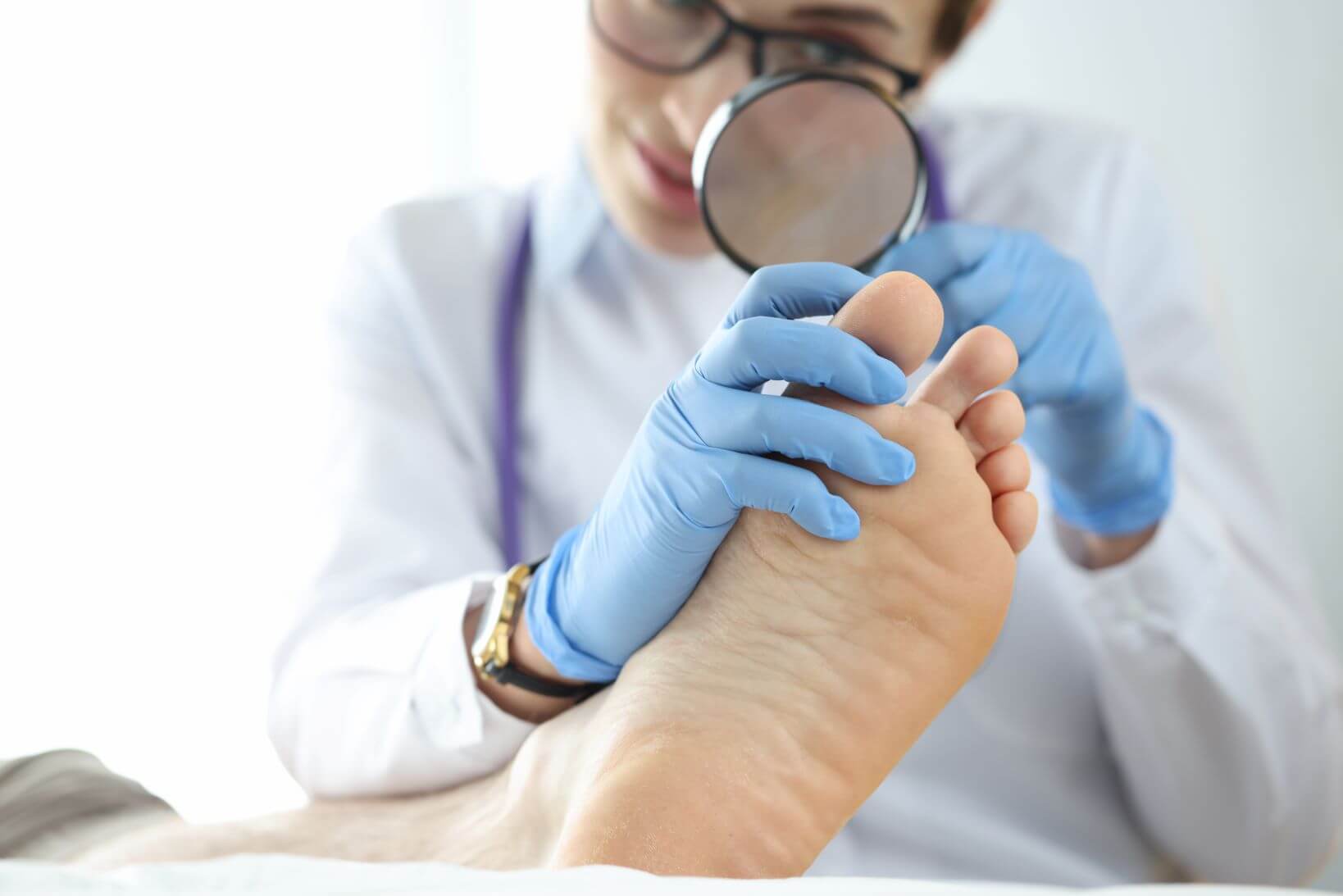Acral lentiginous melanoma is a rare form of skin cancer, and most people are unaware of the symptoms of this condition. According to Dr. Nicholas Golda of U.S. Dermatology Partners in Lee’s Summit, Missouri, “ALM cases only make up around 5% of all diagnosed melanoma cases. Like other types of melanoma, ALM can be deadly if it isn’t diagnosed early. For this reason, it’s essential that dermatologists continue to raise awareness of the symptoms and possible effects of this condition for their patients.” In this blog, you can learn more about symptoms, diagnosis, and potential treatments for acral lentiginous melanoma.
Understanding Acral Lentiginous Melanoma
Acral lentiginous melanoma (ALM) is a form of melanoma that develops on the palms of hands, soles of feet, and around or under the nails. Melanoma is not the most common form of skin cancer, and ALM makes up just about 2-3% of all melanoma cases. That means it’s a rare type of skin cancer. However, melanoma, including ALM, is responsible for a significant number of skin cancer related deaths in the United States, so it’s important to recognize the warning signs of ALM because many people don’t know to look for melanoma on their hands or feet, or some may disregard the lesion thinking it is a bruise or other injury.
The Role of CUBED in Detection
Discussing the symptoms and appearance of ALM, Dr. Golda says, “Many people have heard about the ABCDEs for assessing whether a pigmented spot on your body may be suspicious for melanoma. This memory tool is less helpful for ALM. Rather than the ABCDEs, some have proposed the use of the CUBED acronym to assess whether a lesion on the hands or feet is more or less likely to be a melanoma. You’re going to be looking for lesions or spots that are an irregular Color, have an Uncertain diagnosis (you aren’t sure how you got the spot), are Bleeding, Enlarged (Over 7mm), or have a Delay in healing (Wound that won’t heal for over 2 months). This acronym is an easy way to remember the signs that may be concerning for ALM, and if you notice anything concerning, reach out to your dermatologist to have the spot checked.”
Risk Factors and Symptoms
Unlike most forms of skin cancer, sun exposure is not a cause of ALM. Most skin cancers are more common for people with lighter skin tones, but that’s not the case with ALM. People of any skin tone can develop acral lentiginous melanoma. Some of the risk factors associated with ALM include:
- Trauma and injuries to the bottoms of feet, palms of hands, or nail beds.
- Foot pressure from standing for long periods, wearing high heels, or walking long distances.
- Friction or irritation against the skin.
In addition to the CUBED warning signs, pay special attention and look for the following symptoms of ALM during your self-exam:
- Abnormal nail coloring or lines of color in nails, particularly if the color comes up onto the cuticle.
- New or changing moles on the hands or feet.
- Hand or foot lesions that are brown, black, gray, pink, orange, or red in color, especially with irregular borders.
- Itchy, inflamed, or bleeding lesions.
- Thickened patches of skin on the hands or feet.
- Nails that are misshapen.
- Dark spots in the nail beds or under the nails.
Importance of Early Detection
Early detection of ALM is of the utmost importance to ensure treatment is successful. According to Dr. Golda, “Because this type of skin cancer is so rare and presents in areas where people aren’t used to looking for skin cancer, it is often diagnosed in later stages, leading to a greater risk of metastasis, where the cancer spreads to other parts of the body. This increases the risk of death related to skin cancer. Early detection means we’re able to intervene more quickly and prevent the spread of ALM, reducing the risk of death.”
Diagnosis and Treatment Options
Diagnosis of ALM can take place following a self-exam that uncovers an irregular lesion or as part of a routine skin exam with your dermatologist. The dermatologist will take a sample of the spot and examine it under the microscope. If there are cancerous cells detected, the first step is to remove the lesion and a zone of surrounding tissue. This is called an excision, and for ALM that are diagnosed early, an excision may be all that is required to completely treat the cancer. Certain features that can only be seen under the microscope will help your dermatologist determine if further tests such as lymph node biopsies or imaging studies are required. Management of a more advanced lesion will often involve several doctors in addition to your dermatologist such as a medical oncologist and a surgical oncologist.
Prevention and Self-Examination
On prevention, Dr. Golda says, “Unfortunately, there’s no specific way to prevent ALM. Sun exposure isn’t a serious risk factor, and the underlying causes of this condition are linked to genetics, which is not something we have much control over. That means the focus should be on early skin cancer detection. The easiest way to ensure an early diagnosis is to perform self-examinations each month and report your findings to your dermatologist.”
Keeping the CUBED acronym in mind and considering the risk factors and symptoms listed above, use the following process to perform an at-home skin cancer self-exam:
- Set up in a room with bright lighting and a full-length mirror. Bathrooms are typically the best option.
- Have a hand mirror, flashlight, piece of paper, and pen or pencil at hand.
- Carefully examine the hair and scalp using the hand mirror and flashlight if needed. Then, examine the face and neck. Use the hand mirror to view the back of the neck. Note any irregular lesions.
- Go down the rest of the body carefully examining every area and noting any irregular marks or lesions.
- Look for ALM warning signs on the bottoms of the feet, palms of hands, and nail beds.
Don’t Forget These Warning Signs During Regular Self-Checks
According to Dr. Golda, “While acral lentiginous melanoma is a relatively rare form of cancer, like other types of melanoma, early detection is essential to ensure treatment is effective. I always recommend patients perform self-checks of their skin to screen for early warning signs of all forms of skin cancer. ALM often goes undiagnosed until the later stages because people don’t know what it is or what it looks like, and the symptoms develop in harder-to-see areas. Increasing awareness of what the symptoms are and keeping up with regular self-exams can make a big difference in patients’ treatment odds.”
Contact a Dermatologist for a Consultation or Skin Exam
If you notice any concerning signs on your skin, don’t hesitate. Schedule a dermatology appointment for a thorough examination and peace of mind. Getting started is quick and easy. Simply take a few moments to complete our online scheduling request form. Once we hear from you, a team member at U.S. Dermatology Partners will be in touch to finalize your appointment and answer any questions you may have.
Find a location near me
or


